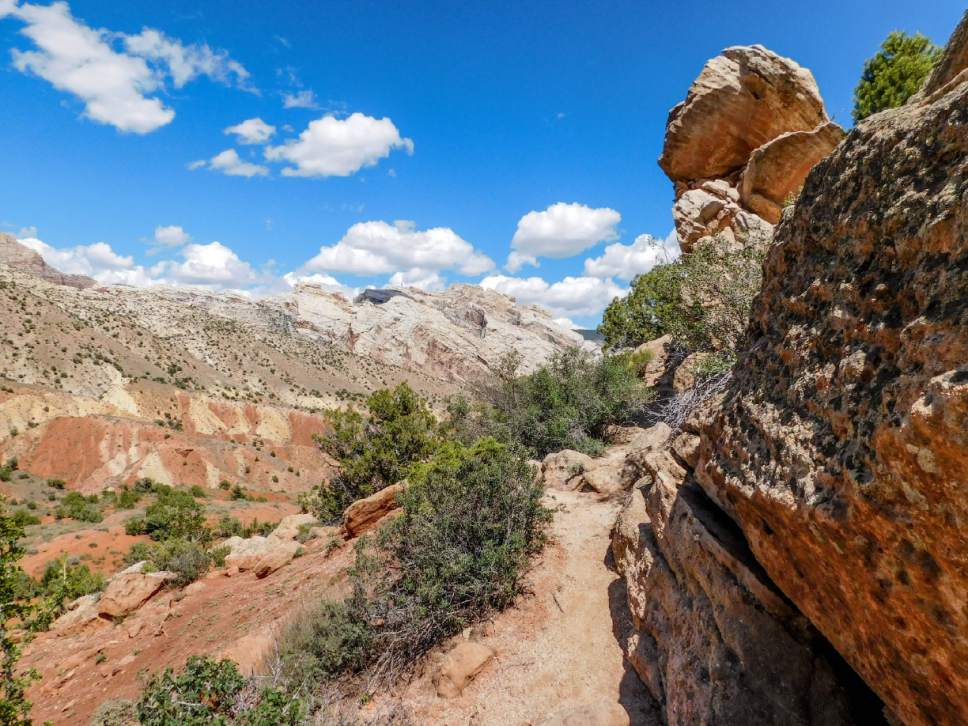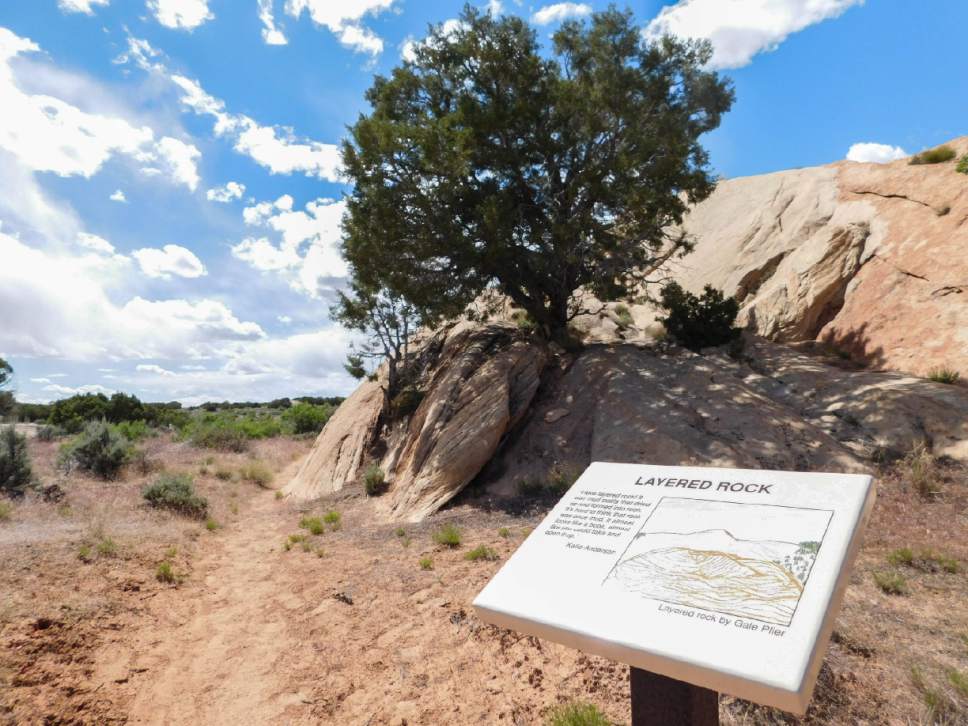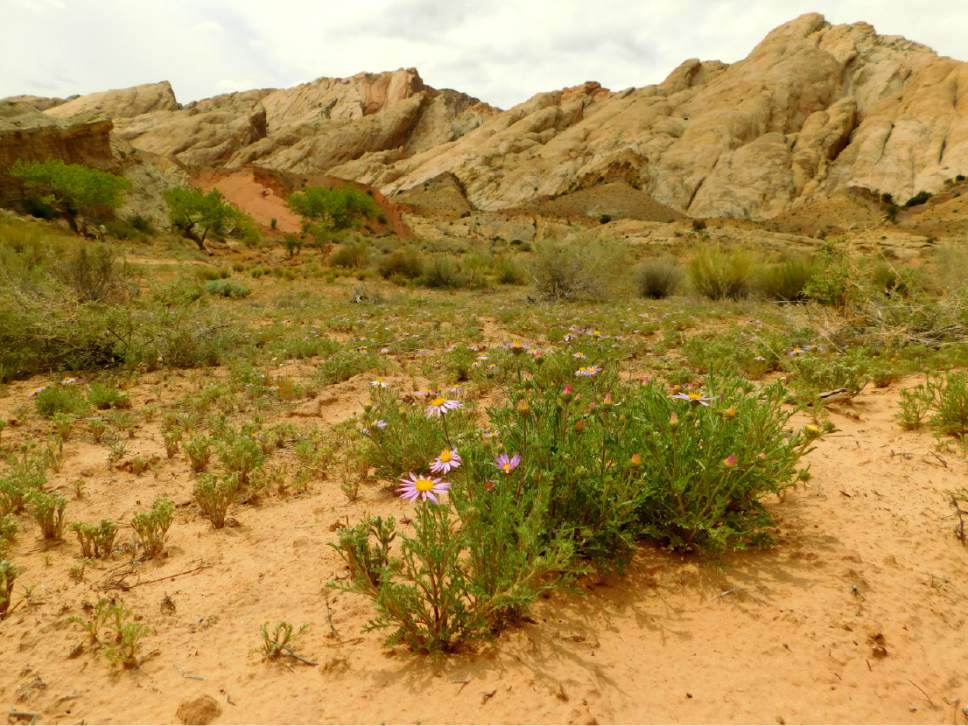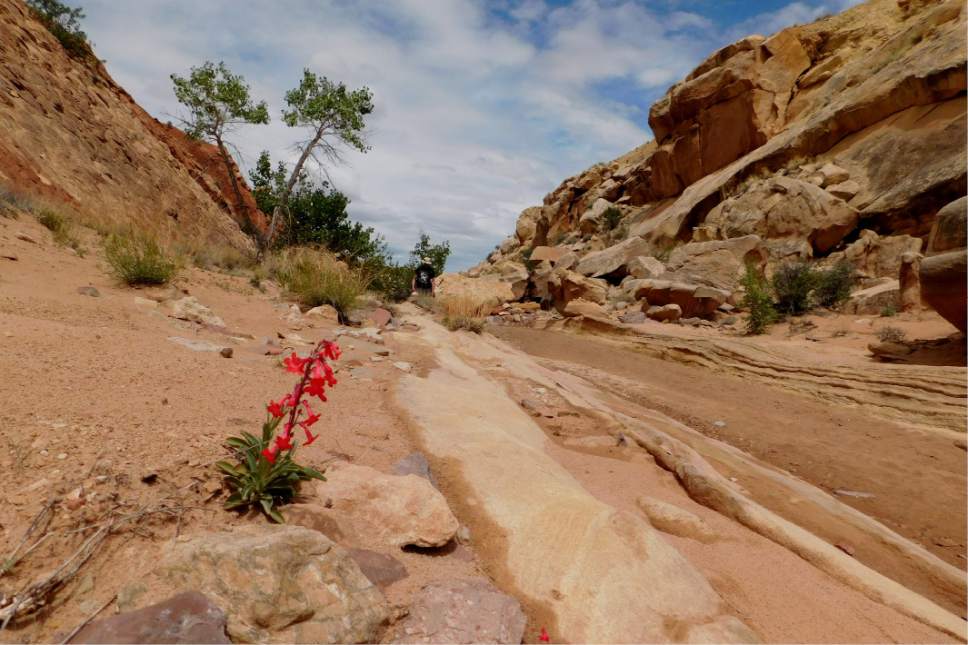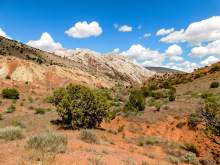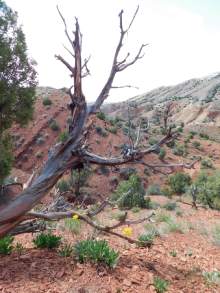This is an archived article that was published on sltrib.com in 2017, and information in the article may be outdated. It is provided only for personal research purposes and may not be reprinted.
In another indication of how President Donald Trump's "America First" energy strategy is playing out in Utah, the federal government has identified parcels it intends to lease for oil and gas development at the doorstep of Dinosaur National Monument and the scenic San Rafael Swell.
These Bureau of Land Management tracts and others, totaling 100,000 acres, are sparking an outcry from environmental groups that a massive auction, set for December, could lead to drilling in places Utahns value for their vistas, recreation and rock art.
"The BLM has quickly come full circle and brought us back to the 'drill now-drill everywhere' days of the early 2000s, and once again Utah is front and center on the national stage for these disastrous policies," said Landon Newell, staff attorney for the Southern Utah Wilderness Alliance.
Three parcels abut Dinosaur, spurring concerns among National Park Service officials that its sister agency is inviting development at the monument's doorstep within sight of highly visited areas and the entrance road.
In a letter to the BLM, Dinosaur Superintendent Mark Foust asked the agency to withhold the many other leases within site of the visitors center and fossil quarry. The 211,000-acre monument sees 300,000 visitors a year, generating $17 million in economic activity.
"Scenic vistas from high elevation points within the monument provide dramatic views and a remote and far-reaching landscape that includes montane peaks, high desert plateaus, entrenched canyons carved by the Yampa and Green rivers, and expansive skies. These vistas are fundamental to the visitor experience at the monument," Foust wrote. If the BLM does offer the leases, he recommended the agency require measures that would safeguard visitor experience, such as painting equipment to match the surroundings and minimizing noise, lighting and nighttime activity.
Anticipated development from these leases would affect a tiny fraction of the viewshed, below 0.01 percent of an observer's field of vision, according to Kathleen Sgamma, president of the Western Energy Alliance.
"The visual impacts are well below the level that would be detectable to a visitor to the monument," Sgamma said. "There are restrictions on each of the leases regarding noise and visual impact. The BLM has done a good job of looking at impacts and mitigating them."
Many of the 79 parcels come from a huge backlog that industry "nominated" for leasing. The Obama administration declined to offer them for a variety of reasons.
For Molen Reef, an area rich with ancient rock art west of the San Rafael Swell, this marks the third time in five years that the BLM is has proposed oil and gas leasing there.
Then-state BLM Directors Juan Palma and Jenna Whitlock declined to offer this area, citing a need to conduct cultural inventories that would identify rock art sites in need of protection should these lands be drilled. Those surveys have yet to be completed, and the BLM acknowledges only a small percentage of the leasing areas have been adequately surveyed.
The BLM recently backed away from a proposal to lease three parcels near Zion National Park, but only after Utah Gov. Gary Herbert and the Washington County Commission came out against leasing in a scenic area that has no current development.
Such pushback is not likely in the latest proposal, which impinges on two master leasing areas that had been initiated during the Obama administration. The BLM has been developing master leasing plans (MLPs) in several parts of Utah where areas open for drilling overlap lands valued for recreation, wildlife, cultural resources and proximity to parks. Only the Moab MLP was completed before Barack Obama left office.
Utah's BLM office has previously maintained a policy of "deferring" any nominated parcel inside such a planning area, postponing a leasing decision until the plan was completed. The goal behind these plans is to "balance" the needs of industry with other stakeholders, but with the transition to an administration bent on "energy dominance," the future of this planning process is in doubt.
"Becoming energy dominant means that we are getting government out of the way so that we can share our energy wealth with developing nations," Interior Secretary Ryan Zinke wrote in a Washington Times op-ed Tuesday. "For years, Washington stood in the way of our energy dominance. That changes now."
Nada Culver, senior director of agency policy at The Wilderness Society, labeled Zinke's call a "rhetorical ploy to justify turning over as much of our publicly owned assets to special interests in the oil, gas and coal industries as possible."
"Part of this sellout includes some of our most precious shared heritage, ranging from national monuments to the Arctic," Culver said in a statement. "Americans do not support an extreme agenda to undo common sense, balanced protections and public health safeguards to reward the fossil fuel industry."
The pending Utah auction indicates the BLM intends to lease inside places where MLPs are still being developed, which critics say defeats the purpose of the plans.
Unfettered leasing could undermine the outdoor recreation industry and tighten rural communities' dependence on boom-and-bust extractive industries, according to Ashley Korenblat, a Moab cycling guide active in public lands issues.
"Well-planned resource extraction is needed to ensure that communities that are dependent on public lands are able to develop broad-based economic strategies that balance resource extraction with other land uses, especially recreation," Korenblat said. "Deferring parcels gives regions more opportunities to develop their recreation economy. It's just a smarter business strategy."
Industry sees MLPs as unnecessary bureaucracy on top of planning that has already been done.
"It was a policy put in place without any rule-making or public notice or comment," Sgamma said. "They [BLM officials] are under no obligation to hold up energy development and economic growth because of a new layer of analysis."
Brian Maffly covers public lands for The Salt Lake Tribune. Brian Maffly can be reached at bmaffly@sltrib.com or 801-257-8713.
Twitter: @brianmaffly



